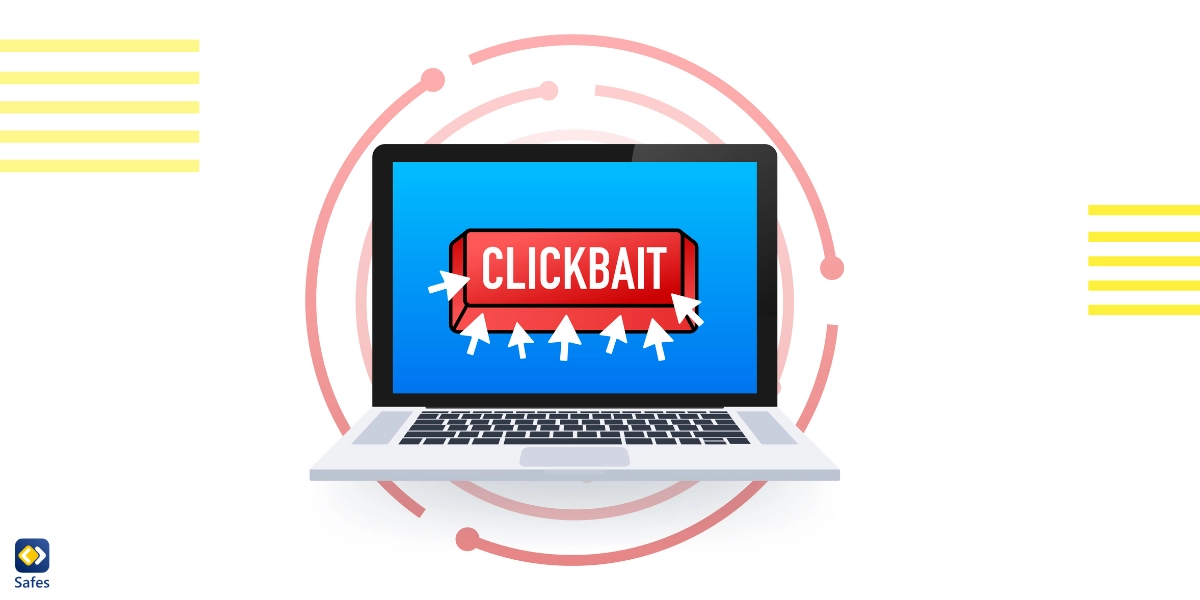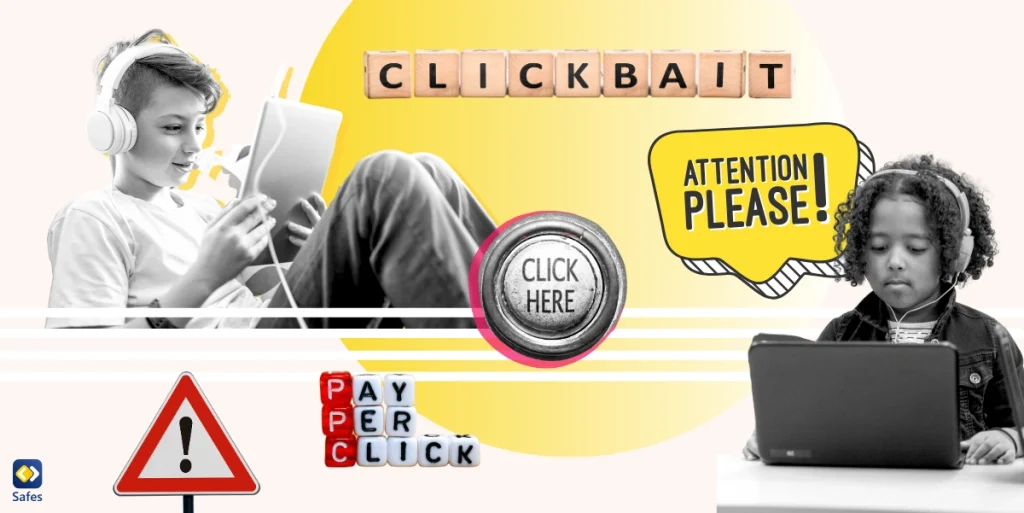Among the many challenges that the modern internet user faces, one of the most pervasive is the phenomenon of clickbait. In this guide, we’ll explore the ins and outs of clickbait, focusing on clickbait examples to learn how it impacts children and how you can mitigate its effects.
Download and Start Your Free Trial of the Safes Parental Control App
Defining Clickbait
“Clickbait” is the online content that entices viewers into clicking a link. Its objective is to boost website traffic and, as a result, increase advertising revenue. The term “clickbait” has a somewhat negative connotation because it often involves misleading headlines and sensationalized content to lure users into clicking. Nevertheless, clickbaiting is common on various online platforms, including:
- Social media
- Games
- Streaming websites
- And many other websites and mobile apps
The Mechanics of Clickbait
Clickbait employs various strategies to achieve its primary goal: to get you to click. These might include:
- Eye-catching headlines: These could promise shocking revelations, emotional content, or intriguing mysteries. More compelling headlines tend to get more clicks.
- Images and thumbnails: Eye-catching visuals often entice users into clicking.
- Vague promises: Clickbait titles often suggest that the content will deliver something spectacular, unusual, or highly desirable.
The essence of clickbait lies in its ability to evoke curiosity and trigger an emotional response, pushing the viewer to click to satisfy their curiosity.
Clickbait Examples: A Snapshot
Here are some hypothetical instances of clickbait:
- “10 Celebrities Who Look Unrecognizable Without Makeup!” – The title creates intrigue about celebrities’ real looks, encouraging users to click.
- “This One Trick Will Make You Lose Weight Overnight!” – The promise of a quick, effortless solution to a common issue (weight loss) can be irresistible to many.
- “You Won’t Believe What Happened to This Child Prodigy!” – The title suggests an incredible story that would pique the curiosity of many.

Clickbait and Children: A Dangerous Combo
Children, with their innate curiosity and lesser ability to discern, are prime targets for clickbait. They’re more likely to click on sensational headlines or eye-catching images without considering the consequences. Here’s how clickbait can negatively impact children:
- Distraction: Clickbait can distract kids from their online activities, leading them down a rabbit hole of unproductive content.
- Inappropriate content: Clickbait links can often lead to content inappropriate for children, such as adult content, violent material, or harmful ideologies.
- Viruses and malware: Clickbait links can redirect to dubious sites that might infect devices with viruses or malware.
- Personal data leakage: Some clickbait might trick children into revealing personal information, opening doors to potential cyber threats like identity theft or online harassment.
A Parent’s Guide to Addressing Clickbait
It’s crucial to educate your child about the pitfalls of clickbait. Here’s how you can approach the subject:
- Explain clickbait: Discuss the various forms clickbait can take using real-life examples for better understanding.
- Talk about the risks: Discuss the potential dangers associated with clickbait, such as exposure to inappropriate content, viruses, and data theft.
- Teach critical thinking: Encourage your child to question the legitimacy of sensational headlines and too-good-to-be-true promises. Teach them to distinguish between reliable sources and potential clickbait.
- Share safe browsing practices: Advise your child not to click on unfamiliar links or share personal information online. Introduce them to safe search tools and parental control software that can filter out harmful content.
- Encourage open communication: Let your child know they can always come to you if they encounter something upsetting or confusing online.
Resources for Parents
Numerous resources are available to help you protect your child against online threats like clickbait. Here are a couple to get you started:
Common Sense Media: Common Sense provides valuable information on digital safety topics, including clickbait. It also offers reviews and ratings for movies, books, apps, and more, helping you make informed decisions about media for your little one.
Safes Parental Control App: Safes offers content monitoring features that can help you block clickbait websites and apps on your child’s devices. Moreover, it provides screen time monitoring features, crucial in helping your child avoid spending too much time exploring clickbait content.
Safes offers both free and paid plans for different needs and budgets. You can download it from our website, Google Play, or App Store.
The Bottom Line: Avoiding Clickbait Examples
While clickbait is a pervasive part of the online experience, it’s possible to equip your child with the knowledge and tools to navigate it safely. By nurturing open communication, teaching critical thinking, and using resources like the Safes parental control app, you can help your child become a savvy, safe digital citizen.
Your Child’s Online Safety Starts Here
Every parent today needs a solution to manage screen time and keep their child safe online.
Without the right tools, digital risks and excessive screen time can impact children's well-being. Safes helps parents set healthy boundaries, monitor activity, and protect kids from online dangers—all with an easy-to-use app.
Take control of your child’s digital world. Learn more about Safes or download the app to start your free trial today!




